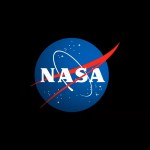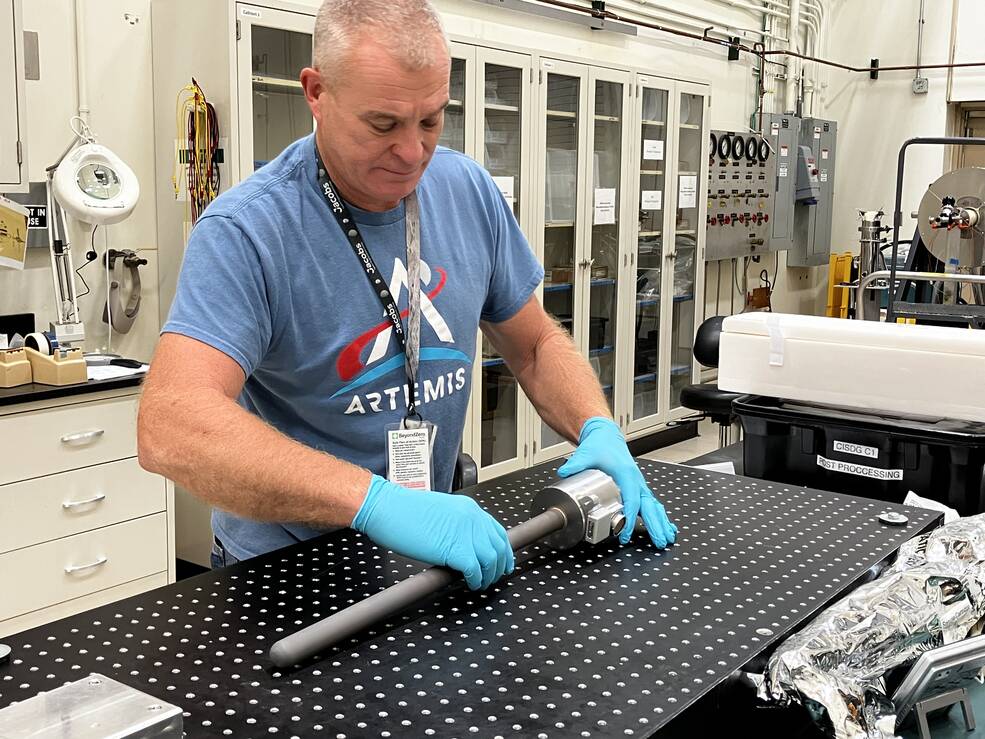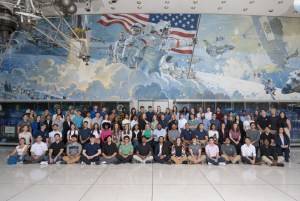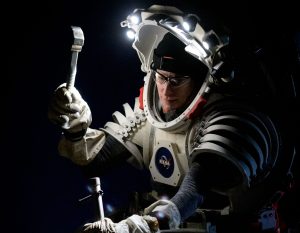By Gina Hannah and Jonathan Deal
For more than 20 years, astronauts aboard the International Space Station have worked diligently on science experiments that benefit humanity on Earth and in deep space. Getting these experiments to and from space is a multi-faceted effort across the agency. Teams at NASA’s Marshall Space Flight Center have combined their world class capabilities – before and after these experiments return from the space station – to make that cutting-edge science a reality.
One experiment that recently returned from station is a perfect example of how the teams work together. The experiment titled “Growth of Ternary Compound Semiconductors” seeks to study crystal growth in microgravity, specifically focusing on ZnSe (zinc selenide) compounds and one of their potential applications in high-powered lasers operating in the infrared wavelengths.
Six SCAs (Sample Cartridge Assemblies) launched to the space station as part of the SpaceX Commercial Resupply Service Mission-24. Using the Materials Science Laboratory on station, it aimed to cultivate crystals of zinc selenide, zinc selenide telluride, and chromium-doped zinc selenide using the physical vapor transport method. But what set this experiment apart was its core objective: to discern how gravity-driven fluid flows influenced the structural, electrical, and optical characteristics of these crystals when compared to their counterparts grown on Earth.
As the crystals began to form, scientists, personnel from space station project office, and the thermal team of Marshall’s Test Lab, monitored their progress. In the unique environment of microgravity, fluid dynamics took on a new dimension, and the crystals flourished under those conditions.
“Without gravity, we have better control because weight itself can cause defects and affect the growth pattern,” said Dr. Ching Hua Su, the experiment’s principal investigator. “Our main goal is to study the effect of gravity on vapor transport crystal growth. When dealing with materials that melt at higher temperatures, vapor growth lowers the temperature and contributes fewer defects. That’s why we chose zinc selenide for our applications.”
Su is a member of the Materials Science and Metallurgy Branch in Marshall’s Materials and Processing Lab. That team also works on the engineering projects ranging from additive manufacturing, welding to metallurgy for fuel tanks and engines.
On Earth, quality ZnSe-based crystals are used in various optical applications, with implications for cutting edge-technologies such as optical windows, infrared lasers, and optical wavelength conversion devices. Being able to conduct the experiment in a microgravity environment, scientists have gained insights that could enhance the quality of these crystals, thus paving the way for revolutionary advances in optical technology.
“We are now on the brink of completing our sixth flight experiment,” Su said.
We are eager to compare our space-grown samples with those from the ground, conducting two more runs on this duplicate furnace in the test lab at Marshall to facilitate direct comparisons.Take time to debrief after success or conflict. Listen, then restate messages to make sure they're understood.

Dr. Ching Hua Su
Materials Science and Metallurgy Branch in Marshall’s Materials and Processing Lab
Ensuring the science conducted on the payload is successful is a team effort, and work on the mission begins years before the payload launches.
“We have a payload operation integration specialist and a payload activity requirement coordinator who work with the payload developer to write procedures and document timing constraints,” said Jennifer McMillian, payload operations manager for the International Space Station Increment 69 management team.
Those procedures include determining the length of the experiment, proper installation of the cartridge, and defining the type of ground support needed. Planners then work those activities into the mission timeline so the payload can be scheduled into the workflow on the Materials Science Research Rack after it arrives on the space station.
Scheduling the work takes into consideration both crew time and station resources, including power, water, and the vacuum exhaust system.
“We’re involved in all of the planning. We have the whole increment team that is working on building a plan, say, six months out, and then refining that plan daily as we get closer to execution,” McMillian said.
Once the payload enters the rack, the team’s work is round-the-clock.
“When we get to real-time execution, the payload rack officers here are responsible for commanding to the rack, applying all of the resources to that rack to enable the science,” she said.
The astronauts will use the instructions written by the payload operations integration specialist to process the run, usually for about a week. The process is repeated for each of the samples in the payload before being returned to Earth.
The work is an international effort. As payloads are being processed, a team at Marshall monitors the rack, and a European Space Agency team in Munich, Germany, adjusts parameters for each specific investigation in the rack, McMillian said.
“When we’re in the middle of execution, we’re in the monitoring phase, and react to any anomalous situation we may see,” she said.
With the crystals now back on Earth, Su and his team are hoping the experiment will lead to new frontiers in crystal growth and the endless possibilities it holds for both space and terrestrial applications.
Hannah, a Media Fusion employee, supports Marshall’s Office of Communications and Strategic Analysis, and Deal, a public affairs officer, supports the Marshall Office of Communications.

































